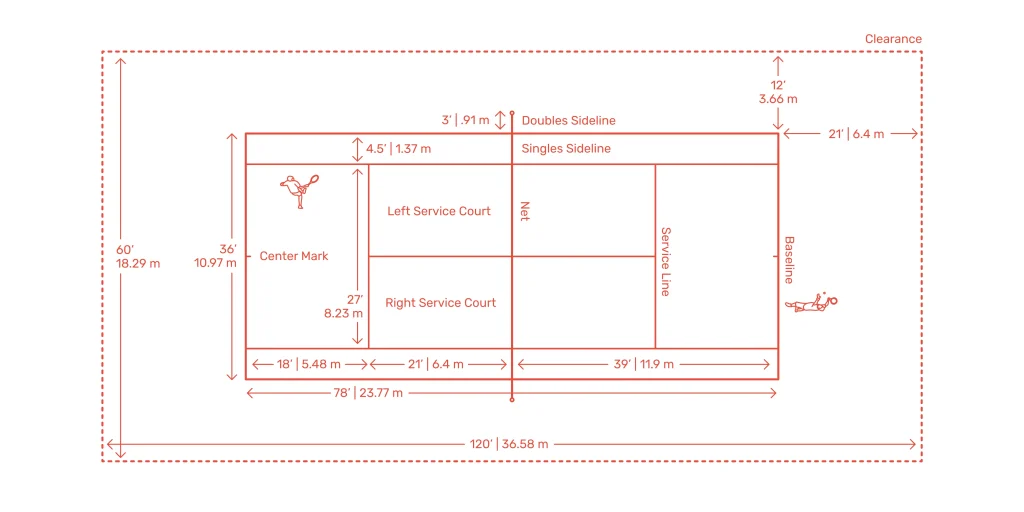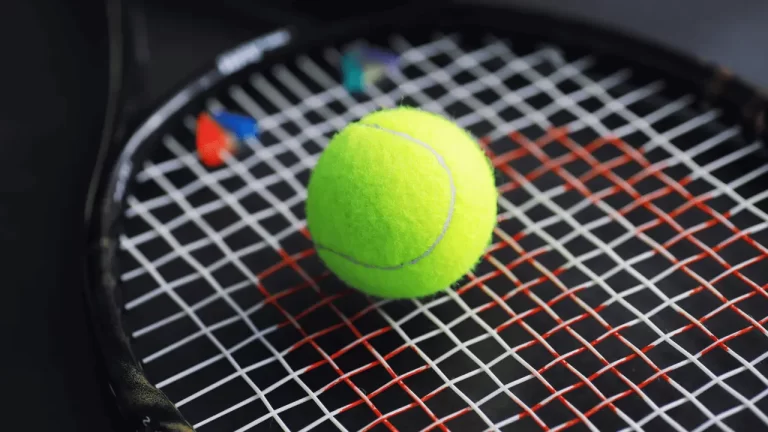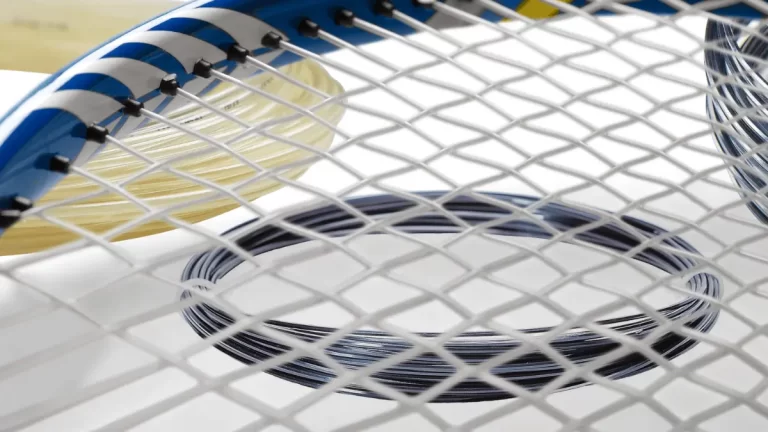Tennis Court Dimensions | Size & Layout 2025
What if I tell you that knowing tennis court dimensions is as important as playing the tennis itself. Yes, if you are unaware of tennis court dimensions, you might miss the major victories and misunderstand the tennis rules.
It is crucial for tennis players, coaches, and enthusiasts to understand the dimensions and size of a tennis court as they learn how to play with a tennis racket. You need to know exactly what measurements and specifications a tennis court has if you want to play the game to the best of your abilities.

Let’s go ahead and discuss tennis court dimensions with various factors like court size, net height, as well as other important aspects.
Tennis Court Dimensions
Dimensions of tennis courts can vary depending on their type, surface, and level of competition. All levels of competition, from amateur to professional, use the same tennis court dimensions regulated by the International Tennis Federation (ITF).
Tennis courts are 78ft (23.77m) long. A singles court measures 27 feet (8.23 metres) in width, while a doubles court measures 36 feet (10.97 metres). From the net, the service line is 21 ft (6.4 m).
Doubles Tennis courts typically have 260.87 metre squares of playing area. Singles courts, which are often marked within doubles courts, are 195.65 square metres in terms of area.
There is no difference between single and double courts in this regard. Tennis courts are 23.77 metres long. Double Tennis courts have a width of 10.97m, with the singles lines sitting 1.37m apart. The singles court has a width of 8.23 metres.
Size of A Standard Tennis Court
The typical length and width for a tennis court ranges between 120 feet and 60 feet respectively, corresponding to an area of 7,200 square feet. However, Tennis courts have a standard playing area of 78 ft. in length and 36 ft. in width, which is equal to 2,808 square feet for doubles matches.
Lines of Tennis Court
Baseline
There is a 36-foot doubles court and a 27-foot singles court. The baselines define each side’s farthest point on the court. All shots that land beyond this line are considered out-of-bounds and most groundstrokes (forehands and backhands) are hit from this area.
Centre Mark
A baseline centre mark is a vertical line towards the net that divides the baseline in half and measures 4 inches in length. In the deuce or ad court, players cannot cross the point when hitting a serve. Players are often instructed to return to the baseline after hitting a groundstroke, making it an essential reference point.
Centre Service Line
It is 42 feet long. On either side of the centre service line, which runs perpendicular to the net, two equal-sized service boxes are created. It provides a great reference point for players when they are playing on the court, as it divides the court in half.
Service Line
It is 27 feet wide. It marks the halfway point between the net and the baseline, running parallel to the net. Unlike the baseline, it does not extend beyond the sidelines of the singles. However, it does mark the end of the service boxes. The serve is considered out if it lands beyond this line.
Doubles Sidelines
They are 39 feet long. Several feet outside from the singles sidelines are the doubles sidelines, which run perpendicular to the net. Providing adequate space for two players on each side of the court, they define the side boundaries of the court for doubles matches.
Singles Sidelines
They are 39 feet long. In singles matches, a perpendicular singles sideline runs parallel to the net and defines the boundaries of the player’s area. Shots must be kept within these lines in order to avoid being called out.
Areas of a Tennis Court
Below, I’ve defined the different areas or boxes that form with the lines of a tennis court.
Service Boxes
It measures 21 feet by 13.5 feet (283.5 square feet) or 6.4 metres by 4.05 metres (26.34 square metres). By intersecting the service line with the centre service line, two equal-sized boxes are created: the deuce (right) and ad (left). For starting a point, players hit a serve into one of these boxes, which is how their names come about.
Doubles Alley
It measures 39 feet x 4.5 feet (175.5 square feet) and 11.89 metres x 1.37 metres (16.30 square metres). An alley that connects the singles and doubles sidelines is called the doubles alley. When competing in doubles, the doubles alley must be used. For singles, it is ignored by players.
Back Court (No Man’s Land)
Approximately 18 feet by 27 feet (486 square feet) 5.49 metres by 8.23 metres (45.15 square metres) Between the service line and the baseline, the backcourt is the largest box on a tennis court. This area of the court is referred to by many tennis instructors and coaches as ‘no man’s land‘.
This area should be avoided when you’re trying to hit a solid volley because you’ll be too close to the net to hit a groundstroke. Generally, players will move through no man’s land. They may hit an approach shot or come to the net for a volley, but they will not stay there.
Centre Line
In tennis, the court is divided into two halves by the centre line, which runs perpendicular to the net. As a reference point during serves, it is only 4 inches long. Serving must be done within the service box and behind the centre line.
Choosing the Right Size for Personal Tennis Court
Home tennis courts are often the subject of discussion among enthusiasts who want to enjoy the sport in the comfort and convenience of their own backyard.
It is crucial to consider not only the available space, but also the recommended dimensions of your backyard tennis court for optimal play. A tennis court’s size and the ideal dimensions for a home court will be discussed in this section.
Play Area for Personal Tennis Court
In feet, the minimum size of a personal tennis court is 98.4 feet (30 metres) long by 49.2 feet (15 metres). Nevertheless, courts should not be built within play areas smaller than this. Your ability to hit the ball properly may be restricted on a smaller court.
Ideal Play Area for your Personal Tennis Court
Tennis courts should be 110 feet (33.5 metres) long by 53 feet (16.2 metres) wide for the best playing experience. The size of the court permits players to move around freely and to hit the ball from a variety of angles without feeling cramped. Aside from the fencing, lighting, and other amenities, it offers enough space for a court to be constructed.
Maximum Play Area for Personal Tennis Court
Personal tennis courts can be as long as 119.75 feet (36.5 metres) and as wide as 59.7 feet (18.2 metres). Most homeowners may not have the space to build a bigger court, but experienced players interested in practising their shots and footwork may benefit from a larger playing surface.
The available space and the recommended dimensions are crucial factors when choosing the personal tennis court size. The play surface of a larger court can be more useful and provide more flexibility for shots, although some people may prefer a smaller court. Your specific needs and preferences will determine the best tennis court size for you.
Building a Tennis Court
It is important to plan carefully, consider the location, and use the right materials when building a tennis court. Tennis courts are built in the following steps.
- Choosing the location: In order to build a tennis court, it is essential to choose the location first. Ensure that the court will fit comfortably on the site by considering its size and the available space.
- Site preparation: Getting the site ready is the next step. Level the ground so there are no obstacles or vegetation in the way of a smooth, even playing surface.
- Material selection: Your tennis court’s success depends on the materials you choose. Material selection should take durability, slip resistance, and maintenance requirements into consideration.
- Building the court: It’s time to install the court once the site has been prepared and the materials have been chosen. As part of this process, a subbase layer is usually laid, followed by a drainage layer and then the playing surface is applied.
- Complete the project: In order to build a tennis court, the final step is to add the finishing touches. Adding fencing and barriers around the court may be necessary. Lines are usually painted on the court, net posts are installed and net posts are painted.
Conclusion
So, tennis courts have a dimension of 78 ft long and have a width of 27 ft for single and 36 ft for double court. However, the size may very depending upon the area, type of match, the court surface and other environmental factors. But standard sizes remain the same and can’t change for national and international matches.
FAQs
What are the standard dimensions of a tennis court?
A tennis court is typically 78 feet (23.77 metres) long. For singles matches, the width is 27 feet (8.23 metres), while doubles matches have a width of 36 feet (10.97 metres). The service line is located 21 feet (6.4 metres) from the net.
How are the different areas of a tennis court defined?
The tennis court is divided into various areas, including service boxes, doubles alley, backcourt (no man’s land), and a centre line. Each area serves a specific purpose, influencing gameplay and strategy.
What is the size and significance of the Back Court (No Man’s Land) on a tennis court?
The Back Court, the largest box on a tennis court between the service line and baseline, is often referred to as ‘no man’s land.’ Approximately 18 feet by 27 feet (486 square feet), this area should be avoided during play, as players are too close to the net for effective groundstrokes.







